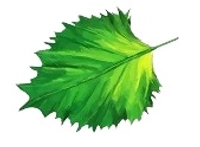
Joginder Nursery
Product details
Tectona Grandis, commonly known as Teak Tree, is a renowned hardwood species native to South and Southeast Asia. Famous for its high-quality timber, this majestic deciduous tree can reach heights of 30-40 meters and is valued for its durability, aesthetic appeal, and versatility. Teak’s impressive size, coupled with its premium wood, makes it a popular choice for high-end furniture, flooring, and construction.
Premium Timber: Teak wood is highly prized for its durability, strength, and resistance to decay and pests. It’s commonly used in high-quality furniture, flooring, and architectural applications due to its ability to withstand harsh weather conditions and its beautiful grain.
Aesthetic Appeal: The Teak Tree’s large, glossy leaves and attractive, golden-brown bark add to its ornamental value. Its canopy provides ample shade, making it a beautiful addition to large gardens, parks, and landscapes.
Economic Value: Teak cultivation is economically significant due to the high demand for its timber. Investing in Teak Tree plantations can be a profitable venture for those interested in sustainable forestry and timber production.
Erosion Control: With its extensive root system, the Teak Tree helps stabilize soil, preventing erosion on slopes and riverbanks. This makes it a valuable species for reforestation and land management projects.
Wildlife Habitat: The Teak Tree supports various forms of wildlife by providing habitat and food. Its leaves and flowers attract insects and birds, contributing to local biodiversity.
Light: Tectona Grandis requires full sun for optimal growth. Ensure the tree receives at least 6-8 hours of direct sunlight daily to promote healthy development and strong wood production.
Watering: Water the tree regularly during its initial establishment phase. Once mature, it is moderately drought-tolerant but benefits from consistent watering, especially during dry periods.
Soil: The Teak Tree prefers well-drained, loamy soils. It can tolerate a range of soil types but performs best in slightly acidic to neutral pH levels. Good drainage is essential to prevent root rot.
Pruning: Prune the tree to maintain its shape and remove any dead or damaged branches. Regular pruning helps to promote a strong, straight trunk and a healthy canopy. The best time to prune is in late winter or early spring before new growth begins.
Fertilization: Apply a balanced, slow-release fertilizer in early spring to support healthy growth and wood development. Avoid over-fertilizing, as this can lead to excessive foliage growth at the expense of wood quality.
Leaf Drop: Natural leaf drop occurs as part of the tree’s seasonal cycle. Excessive leaf drop may result from drought stress, nutrient deficiencies, or pest infestations. Ensure consistent watering, provide necessary nutrients, and inspect for pests if leaf drop persists.
Pests: The Teak Tree can be affected by pests such as termites, beetles, and caterpillars. Regularly inspect the tree and treat infestations with appropriate insecticides or natural remedies like neem oil.
Fungal Diseases: Fungal infections can cause leaf spots or mold. Improve air circulation around the tree, remove affected leaves, and apply a fungicide if necessary to manage fungal issues.
Root Rot: Overwatering or poorly drained soil can lead to root rot. Ensure the soil is well-drained and water only when the top inch of soil feels dry to prevent root rot.
Please Note: Images are for reference purposes only. Actual product may vary in shape or appearance based on climate, age, height, etc. The product is replaceable but not returnable. Plants will be delivered in black nursery poly bag or pot unless until mentioned on the product page.
Similar products